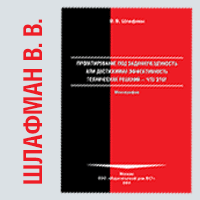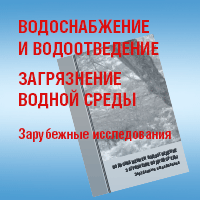№3|2019
VENTILATION SYSTEMS
bbk 000000
UDC 697.92
Indoor air quality assessment in office buildings
Summary
The assessment of indoor air quality in an office building is given. The analysis of the results of reviewing Russian and foreign authors on this topic showed that at CO2 concentration of 600–800 ppm and higher the well-being of people worsens, which leads to impaired productivity and increased fatigue. Prolonged exposure to carbon dioxide in humans can lead to chronic diseases. The results of an experimental study of the change in carbon dioxide concentration in an office of a public building with an area of 30 m2 with continuing presence of five people are presented. The CO2 concentration was measured using MT 8057 portable carbon dioxide detector during 24 hours. According to the measurement results a graph of CO2 concentration is plotted against the time. It was concluded that the air quality was not satisfactory during certain periods of the working day (from 10:40 to 13:30 and from 14:45 to 19:00 the CO2 concentration exceeded 1000 ppm) which indicates problems with the ventilation system and excessive sealing of the room (because of plastic windows). The necessity of taking measures to improve the efficiency of inflow exhaust ventilation has been substantiated.
Key words
carbon dioxide , ventilation , personalized air terminal device , air quality , air exchange , public buildings , sick building syndrome,
The further text is accessible on a paid subscription.
For authorisation enter the login/password.
Or subscribe
REFERENCES
- Wargocki P., Wyon D. P., Fanger P. O. Productivity is affected by the air quality in offices. Proceedings of Healthy Buildings, 2000, v. 1, no. 1, pp. 635–640.
- Wargocki P., Wyon D. P., Baik Y. K., et al. Perceived air quality, Sick Building Syndrome (SBS) symptoms and productivity in an office with two different pollution loads. Indoor Air, 2000, v. 9 (3), pp. 165–179.
- Lagercrantz L., Wistrand M., Willn U., et al. Negative impact of air pollution on productivity: Previous Danish findings repeated in new Swedish test room. Proceedings of Healthy Buildings, 2000, v. 1, pp. 653–658.
- Fisk W. J. Health and productivity gains from better indoor environment and their relationship with building energy efficiency. Annual Review of the Energy and the Environment, 2000, v. 25, pp. 537–566.
- Mansurov R. Sh., Gurin M. A., Rubel’ E. V. [The effect of carbon dioxide concentration on the human body]. Privolzhskii Nauchnyi Zhurnal, 2015, no. 1, pp. 60–64. (In Russian).
- Bukhmistrov V. V., Prorokova M. V. [Assessment of the controlled indoor environment in residential, public and administrative buildings]. Vestnik IGEU, 2015, issue 4, pp. 1–6. (In Russian).
- Gubernskii Iu. D., Shil’krot E. O. [How much air does a person need for confort?]. AVOK, 2008, no. 4, pp. 4–12. (In Russian).
- Gurin I. V. Who is responsible for the stuffiness in the room? http://www.ivik.ua/press/publikatsii/5792/kto-otvetit-za-dukhotu-vpomeshchenii/ (accessed 04.02.2019). (In Russian).
- Rymarov A. G., Agafonova V. V. [Personalized air terminal device]. Vodosnabzhenie i Sanitarnaia Tekhnika, 2018, no. 3, pp. 60–63. (In Russian).






